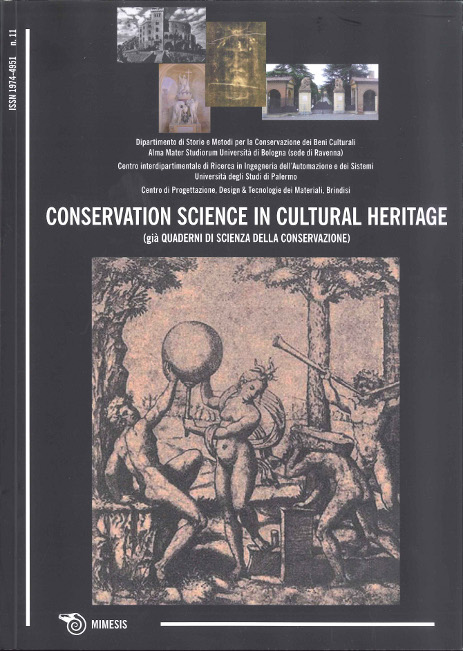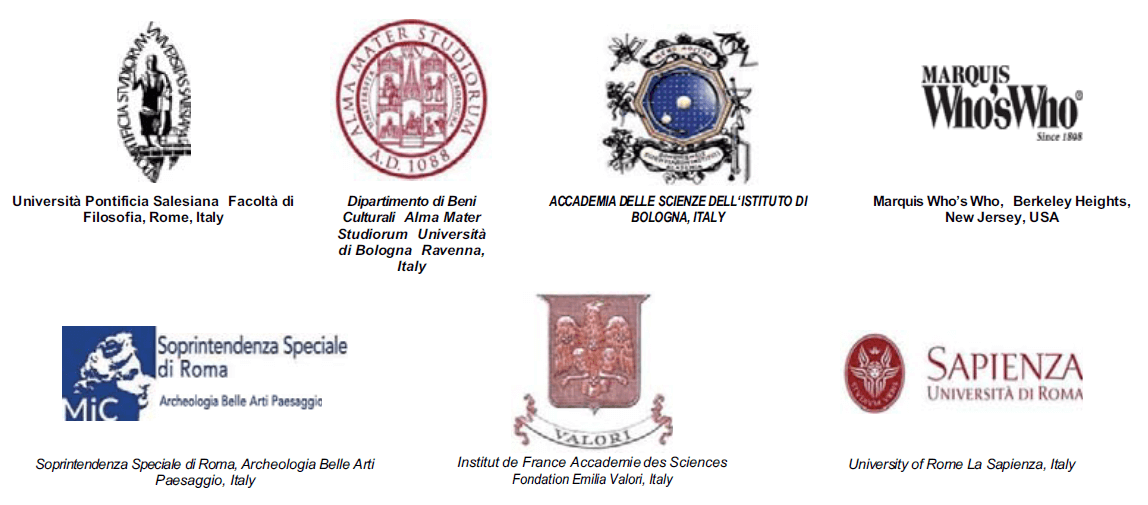Working towards the advanced management of cultural heritage
DOI:
https://doi.org/10.6092/issn.1973-9494/2696Keywords:
cultural heritage, public administration reform, governance, managementAbstract
Within the broad framework of public administration reform, the Act of the ministerial directive, 10th May 2001, regarding the “technical/scientific criteria and standards for the functioning and development of museums” constitutes an essential tool in promoting the rapid growth of this sector. In fact, following in the footsteps of Icom's Deontological Code and through the advantageous involvement of regions and local authorities, the document underlines the importance of service quality and defines scopes, criteria and standards for operating and developing museums. On the basis of the subsidiarity principle, regions are the main actors in the implementation of the Directive Act, and in the last few years they have launched progressive plans aimed at increasing quality in museums by implementing standards and initiating accreditation processes. The aim of this study is to analyse the procedure enacted by the region of Emilia-Romagna, referring both to the regulations and the state of the art implementation of standards and its effect on museum management. In implementing the Directive Act, regions must be given more power, so that they are able to foster progressive plans aimed at increasing quality in museums and realizing accreditation processes.
Riassunto
Nel quadro generale di riforma della pubblica amministrazione, l’Atto di indirizzo ministeriale del 10 maggio 2001 sui ‘‘Criteri tecnico- scientifici e standard per il funzionamento e lo sviluppo dei musei” rappresenta un elemento fondamentale e un fattore di accelerazione. Sul tracciato del Codice deontologico dell’Icom e attraverso un proficuo coinvolgimento delle regioni e delle autonomie locali, il documento ha sottolineato l’importanza della qualità dei servizi offerti, definendo gli ambiti, i criteri e gli standard per il funzionamento e lo sviluppo dei musei. Sulla base del principio di sussidiarietà, i principali attori dell’attuazione e messa in pratica dell’Atto di indirizzo sono le regioni, che in quest’ultimi anni hanno avviato progressivi percorsi di miglioramento della qualità dei musei attraverso l’adozione degli standard e l’avvio di processi di accreditamento. In particolare, è stato analizzato l’iter seguito dall’Emilia-Romagna sia con riferimento alla normativa che allo stato dell’arte.
Résumé
Dans le cadre général de la réforme de l’administration publique, l’Acte d’orientation ministérielle du 10 mai 2001 sur les « Critères technico-scientifiques et les standards pour le fonctionnement et le développement des musées » représente un élément fondamental et un facteur d’accélération. Sur le tracé du Code déontologique de l’Icom et à travers une implication avantageuse des régions et des autonomies locales, le document a souligné l’importance de la qualité des services offerts, définissant les domaines, les critères et les standards pour le fonctionnement et le développement des musées. Sur la base du principe de subsidiarité, les principaux acteurs de l’actuation et de la mise en pratique de l’Acte d’orientation sont les régions, qui, ces dernières années, ont amorcé des parcours progressifs d’amélioration de la qualité des musées à travers l’adoption des standards et le début de processus d’accréditation. En particulier, on a analysé le cheminement suivi par l’Emilie Romagne tant en référence à la normative qu’à l’état de l’art.
Zusammenfassung
Im großen Rahmen der Reform der öffentlichen Verwaltung stellt die ministerielle Richtlinie vom 10. Mai 2001 über ‘‘Technisch-wissenschaftlichen Kriterien und Standards für den Betrieb und die Entwicklung der Museen” ein grundlegendes Element und einen Beschleunigungsfaktor dar. Mit Blick auf die Ethischen Richtlinien des ICOM und über eine fruchtbare Einbeziehung der Regionen und der unabhängigen örtlichen Strukturen unterstreicht dieses Dokument die Bedeutung der Qualität der angebotenen Dienstleistungen und definiert die Umgebung, die Kriterien und die Standards für den Betrieb und die Entwicklung der Museen. Nach dem Subsidiaritätsprinzip sind die wichtigsten Stellen für die Durchführung und die praktische Umsetzung der Planungsrichtlinie die Regionen, die in den letzten Jahren schrittweise Ansätze für die Verbesserung der Qualität der Museen durch Anwendung der Standards und durch den Einsatz von Akkreditierungsverfahren auf den Weg gebracht haben. Es wurde insbesondere die von der Region Emilia Romagna eingeschlagene Vorgehensweise analysiert, sowohl im Hinblick auf die Normvorgaben als auch auf den erreichten Stand.
Resumen
En el marco general de reforma de la administración pública, el Acto de orientación ministerial de 10 mayo de 2001 sobre "Criterios técnico-científicos y estándares para el funcionamiento y desarrollo de los museos” representa un elemento fundamental y un factor de aceleración. Siguiendo las líneas del Código deontológico del Icom y a través de una productiva participación de las regiones y de las autonomías locales, el documento ha puesto de relieve la importancia de la calidad de los servicios ofrecidos, definiendo los ámbitos, los criterios y los estándares para el funcionamiento y el desarrollo de los museos. Basándose en el principio de subsidiariedad, los principales actores de la implementación y puesta en práctica del Acto de orientación son las regiones, que en estos últimos años han puesto en marcha planes progresivos de mejora de la calidad de los museos a través de la adopción de los estándares y procesos de acreditación. En particular, se ha analizado el proceso seguido por la región de Emilia-Romaña tanto en referencia a la normativa como a los últimos avances.
Резюме
В общей картине реформы государственной администрации министерский акт от 10 мая 2011 года «Технико-научные критерии и стандарты функционирования и развития музеев» представляет собой фундаментальный элемент и ускоряющий фактор. В соответствии с Кодексом поведения ИКОМ (Кодекс Этики для музеев) и посредством успещного вовлечения местных властей документ подчеркнул важность качества предлагаемых услуг , определив сферы, критерии и стандарты для функционирования и развития музеев. На основе принципа субсидиарности основными героями реализации и внедрения в практику вышеуказанного Акта являются областные администрации, которые в последние годы существенно улучшили качество музеев посредством принятия стандартов и запуска процессов аккредитации. В частности, был проанализирован процесс в Эмилии-Романье, с точки зрения законодательства и с точки зрения настоящего состояния дел.
References
POLLITT, C. 2009. Structural change and public service performance: international lessons?, Public Money & Management, Volume 29, 5: 285 – 291
PANOZZO, F. 2000. Management by Decree. Paradoxes in the reform of the Italian public sector. Scandinavian Journal of Management 16, no. 4: 357-73.
ZAN, L., S. BONINI BARALDI, AND C. GORDON. 2007. Cultural heritage between centralisation and decentralisation: Insights from the Italian context.
International Journal of Cultural Policy 13, no. 1: 49-70.
FEDELE P., ONGARO E. 2008. A Common Trend, Different Houses: Devolution in Italy, Spain and the UK. Public Money Management, 28, 2: 85 – 92
ZAN. L. 2000. Managerialisation processes and performance in arts organisations: the Archaelogical Museum of Bologna, Scandinavian Journal of Management, Volume 16, Issue 4, Pages 431-454.
FARNETI G., DEL SORDO C., ORELLI. R. L. (2009). Heritage assets in Italian local overnements. Conservation science in cultural heritage. Vol. 9, pp. 17 - 45
FARNETI G. (2004), Ragioneria pubblica, Franco Angeli, Milano;
FARNETI G. (2007), Economia d’azienda, Franco Angeli, Milano.
FARNETI G., ORELLI R. L. (2004), “Evoluzione dell’assetto istituzionale ed analisi dei modelli gestionali dei servizi museali negli enti locali alla luce di alcune evidenze empiriche”, in SIBILIO B. (2004, a cura di), Misurare e comunicare i risultati. L’accountability del Museo, Franco Angeli, Milano, pagg. 131-150;
ORELLI R. L. (2008), Gestire la cultura. La misurazione della performance del patrimonio culturale: principi, strumenti ed esperienze, Franco Angeli, Milano;
SIBILIO PARRI B. (2004), Misurare e comunicare i risultati: l’accountability dl museo, III tomo, Franco Angeli, Milano
ZAN, L. 2006. Managerial rhetoric and arts organisations. Basingstoke: Palgrave-Macmillan.
Downloads
Published
How to Cite
Issue
Section
License
Copyright (c) 2011 Giuseppe Farneti, Carlotta del Sordo, Rebecca Levy Orelly
Copyrights and publishing rights of all the texts on this journal belong to the respective authors without restrictions. Authors grant the journal right of first publication.
This journal is licensed under a Creative Commons Attribution 4.0 International License (full legal code).
See also our Open Access Policy.






